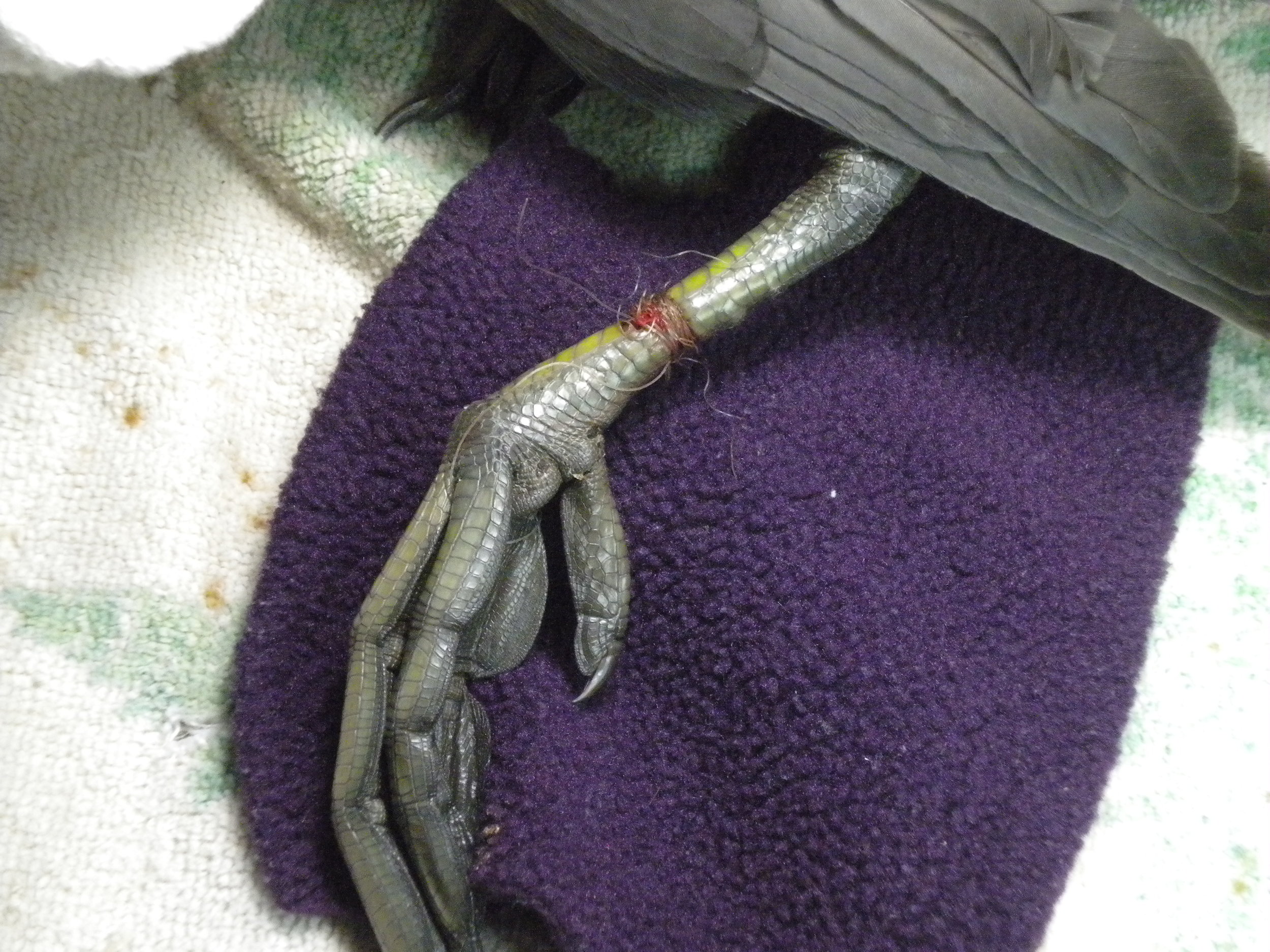LEAD POISONING IN RAPTORS AND OTHER WILDLIFE
Lead is a heavy metal. It must be ingested into the body's gastro-intestinal system. From there, it gets into the bloodstream and organs. It also affects the central nervous system, often presenting in eagles as the inability to use the feet and toes, causing the bird to stand on its hock joints or not at all. Definitive diagnosis requires blood testing.*
The lead can only be eliminated by the administration of a chelating agent that will bind with the lead and pull it out of the body in the waste. Most commonly used in wildlife care is injectable calcium and B-complex vitamins.
KNOWN SOURCES OF LEAD POISONING
Wildlife may ingest lead by eating prey that contains lead in the form of lead ammunition.
Eagles, turkey vultures, and great-horned owls will eat carcasses. It is also well known that the California Condor eats carcasses and can ingest lead in the process. Lead ammunition can also be found in “gut piles.” Hunters often gut and partially butcher animals after shooting. Lead shot often fragments, sometimes into nearly microscopic ones, distributing it widely through the body.
Seabirds often ingest lead sinkers and jigs and become ill. Raptors and other predators may feed on these poisoned seabirds.
Fish-eating birds, such as bald eagles and osprey, may ingest lead directly from fish that contain lead sinkers or lures.
Waterfowl, especially "dabblers" that feed at the bottom of ponds, lakes and streams, can ingest lead pellets that may have fallen to the bottom. This can cause lead poisoning in the waterfowl and, secondarily, into those who prey on them such as bald eagles, turkey vultures, and other scavengers or predators.
Environmental contaminants such as lead batteries, lead paint, lead smelters and mining, and sewer sludge can also be sources of poisoning.
QUESTIONS WE HAVE ABOUT LEAD POISONING
We are in touch with biologists at U.S. Fish and Wildlife for more information about possible ingestion of lead through ground and/or water contamination. There have been some cases (not local) of raptors diagnosed with lead poisoning who frequented areas where lead mines operate or once operated.
The questions we want answered: Can lead in the environment get into the body through drinking water? Can it get into vegetation and from there into prey species such as rabbits and ground squirrels?
Do we have sites in Inyo and Mono county where there is known lead contamination: Example: the old auto salvage yard in Benton; illegal dumping sites found out in the desert.










